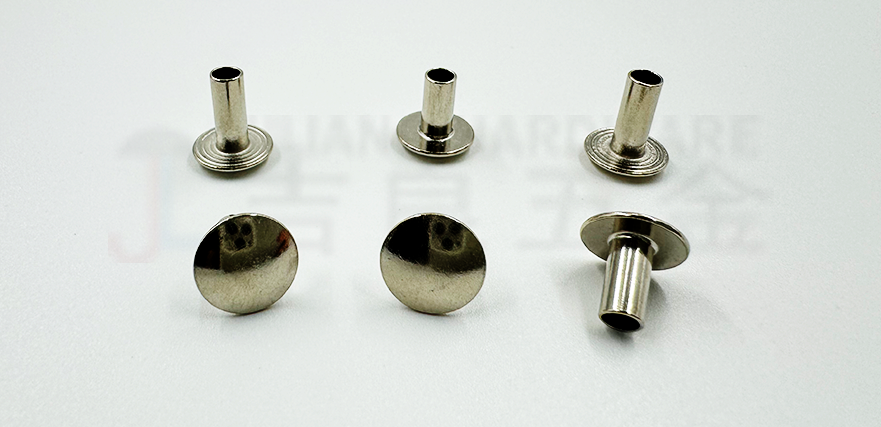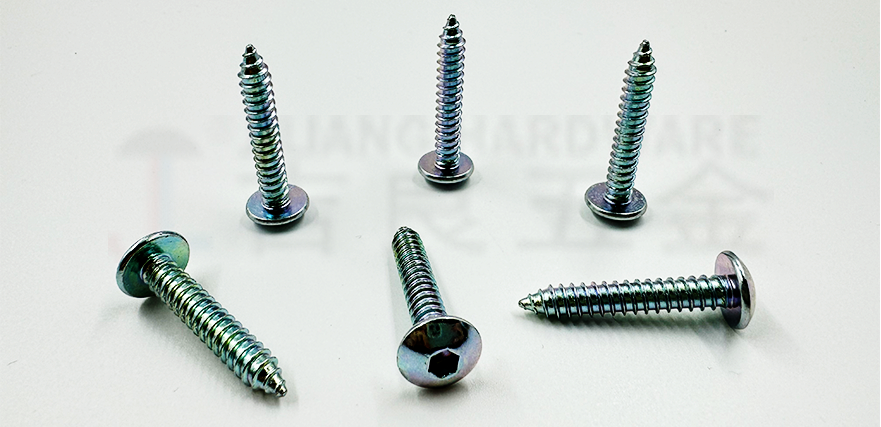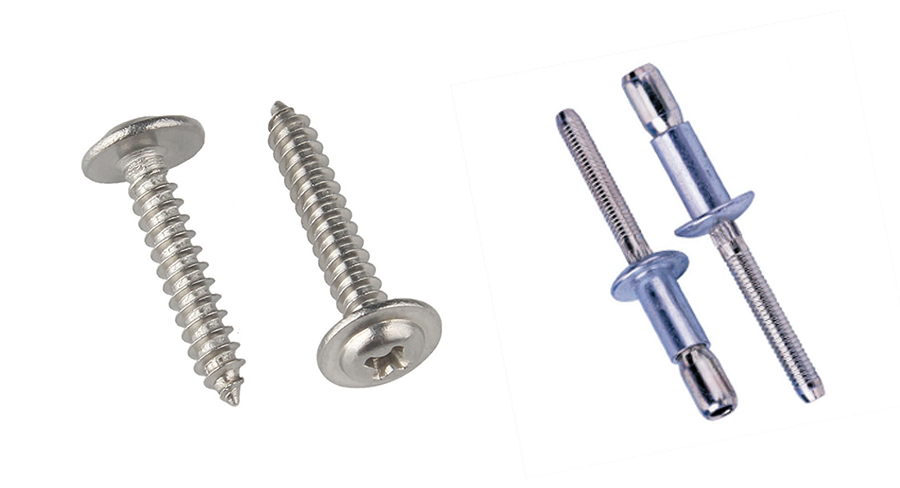In industries such as aerospace, automotive or construction, choosing the appropriate fastening method is critical when joining materials. The two most common methods — riveting and screwing — have very specific benefits and downsides.
This guide will look at the main differences between riveting and screwing to help you understand which method is best for your requirements.
What is Riveting?
Riveting is a robust, vibration-resistant permanent fastening process that makes a secure connection between two materials. You push a rivet through holes cleated holes and mushroom its end to affix the connection.

Types of Rivets
Solid Rivets: Ideal for heavy-duty applications (like airplanes, bridges).
Blind Rivets: Utilized when only one side of the material is available.
Semi-Tubular Rivets: Best for lighter applications where weight matters.
Advantages of Riveting
✔ Permanent & Strong – Excellent shear strength; can be used structurally.
✔ Sits Tight – Vibration-Resisted for High Movement Environments
✔ No Threading Required – Best for thinner or soft goods
✔ Weather Resistant – Designed to last, even in harsh conditions.
Disadvantages of Riveting
✖Specialized Tools Requires — Needs rivet guns or hydraulic presses.
✖ Not Easy to Take Off – If you drive out the rivets, it can ruin the material.
✖ Restrictions in Accessibility – Hardly use in a small area.
Best for: Parts made of aluminum, steel, titanium; aerospace, automotive frames; metal construction; heavy machinery.
What is Screwing?
A means by which threaded fasteners are used to fasten materials together in an adjustable and removable fashion: screwing.

Types of Screws
Wood Screws – Made for timber and composite materials.
Machine Screws – Used with nuts or threaded holes in metal
Self-tapping screws – Cut their own threads in softer materials.
Advantages of Screwing
✔ Easy Installation & Removal — Also adjustable when necessary.
✔ Pluggable – Can be dismounted correctly.
✔ Easily Obtainable – Screws are found in different sizes and are made from different materials.
✔ Compatible with Various Materials – Ideal for wood, metal, plastic, and others.
Disadvantages of Screwing
✖ Not As Strong As Rivets – Not as well suited for higher-stress applications.
✖ Can Loosen Over Time – Vibration can loosen screws.
✖ Risk of Thread Stripping – Overtightening or soft materials can physically strip threads.
Best for: Furniture, electronics, DIY projects and temporary assemblies

Main Differences: Riveting vs. Screwing
Key Differences: Riveting vs. Screwing
| Feature | Riveting | Screwing |
|---|---|---|
| Strength | Extremely strong, ideal for heavy loads | Good for light to medium loads |
| Installation | Requires special tools (rivet gun) | Simple (screwdriver/drill) |
| Removability | Permanent (must be drilled out) | Adjustable & reusable |
| Vibration Resistance | Excellent (won’t loosen) | Can loosen over time |
| Cost | Higher (tools + labor) | Lower (common tools) |
| Best Applications | Aircraft, bridges, structural metalwork | Furniture, electronics, repairs |
Which Should You Choose?
Choose Riveting If:
1.You require a permanent, high-end bond.
2.The joint is subject to high stress, or vibration.
3.The materials are either thin or can’t hold threads.
Choose Screwing If:
1.You require adjustability or easy disassembly.
2.The project is do-it-yourself or low-cost.
3.The material is thick enough to secure a strands.
Final Thoughts
Riveting and screwing both serve their function in manufacturing and construction. Riveting has great strength and, is quite durable, whereas screwing offers versatility and simplicity.
Riveting is the best option for high-performance, permanent joints. Screwing is the method of choice for versatile, removable connections.
Submit for an Online Quote:
Send us (sale803@jiliang988.com) the completed form along with your drawing, and we’ll provide you with a fast and competitive quote.
If you have any questions or need assistance, feel free to contact us. We’re here to help!

 Language
Language








